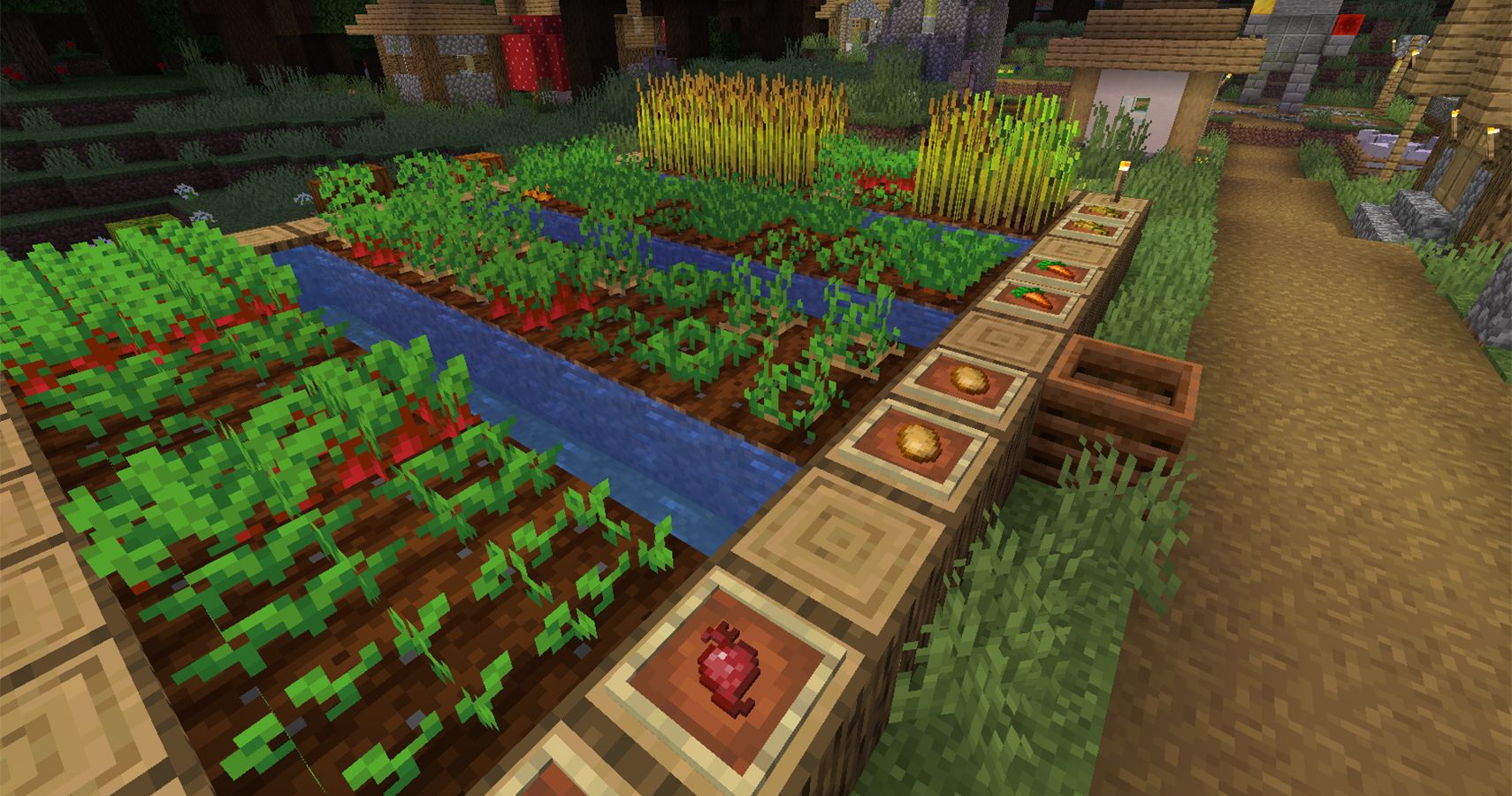
Maintaining a proper supply of food is important for long term survival in Minecraft. A player could have diamond armor, a diamond sword, powerful enchantments, and even the best potions, but without proper food, they will eventually perish.
RELATED: 10 Indie Games That Became Major Success Stories
Fortunately obtaining enough food for survival isn’t terribly difficult and with the right steps players can essentially automate the entire process. Farming can be as simple or as complex a process as players want it to be. For those ready to get their hands dirty and solve their hunger problems in Minecraft here’s everything players need to know about growing crops.
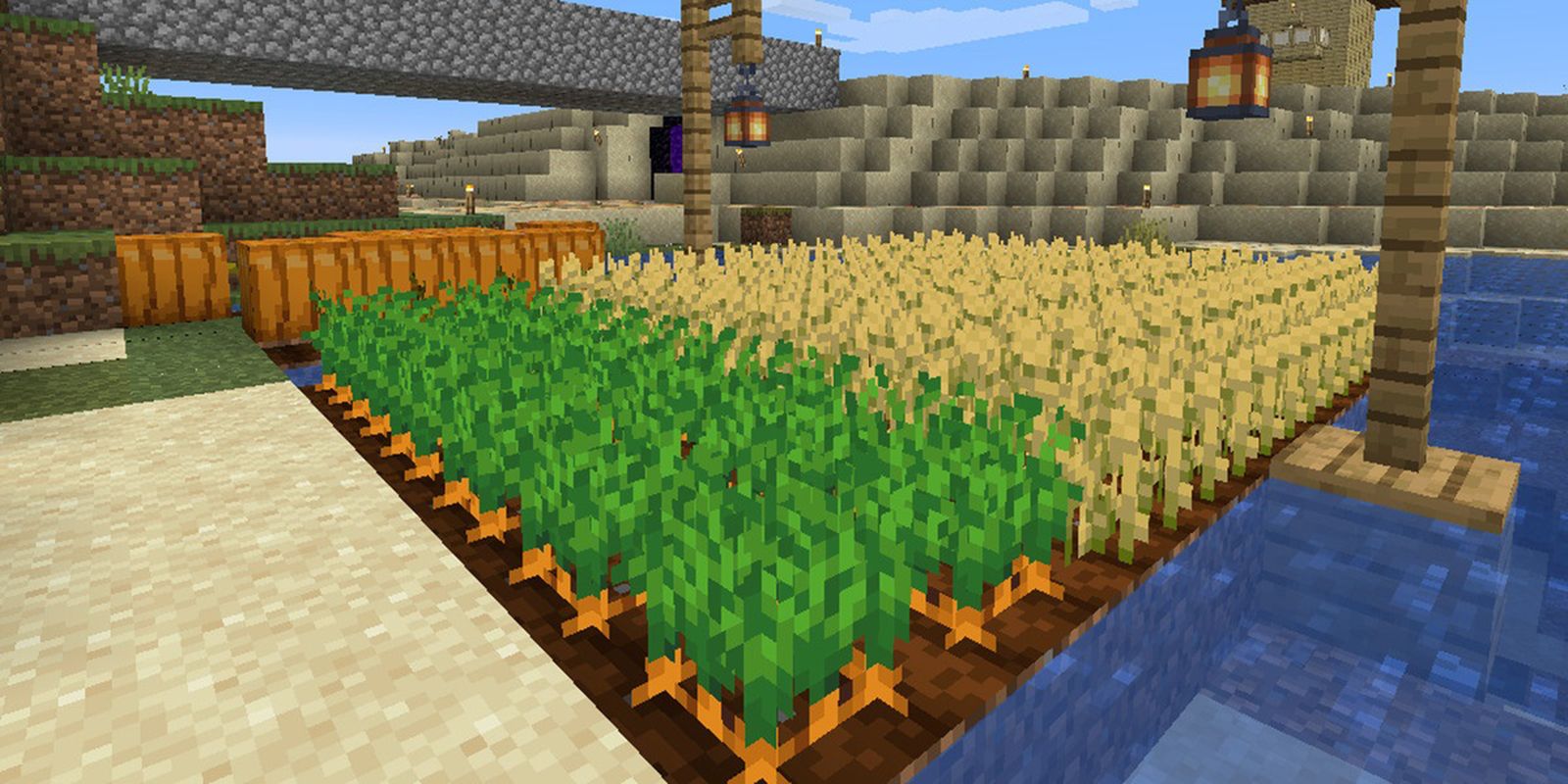
There are four main crops players can grow in Minecraft.
- Wheat
- Carrots
- Potatoes
- Beetroot
Each crop has different roles within the game and is used in different recipes. Only one is really needed to solve the problem of starvation. But there are plenty of reasons players may be included to use more than one if not all of them.
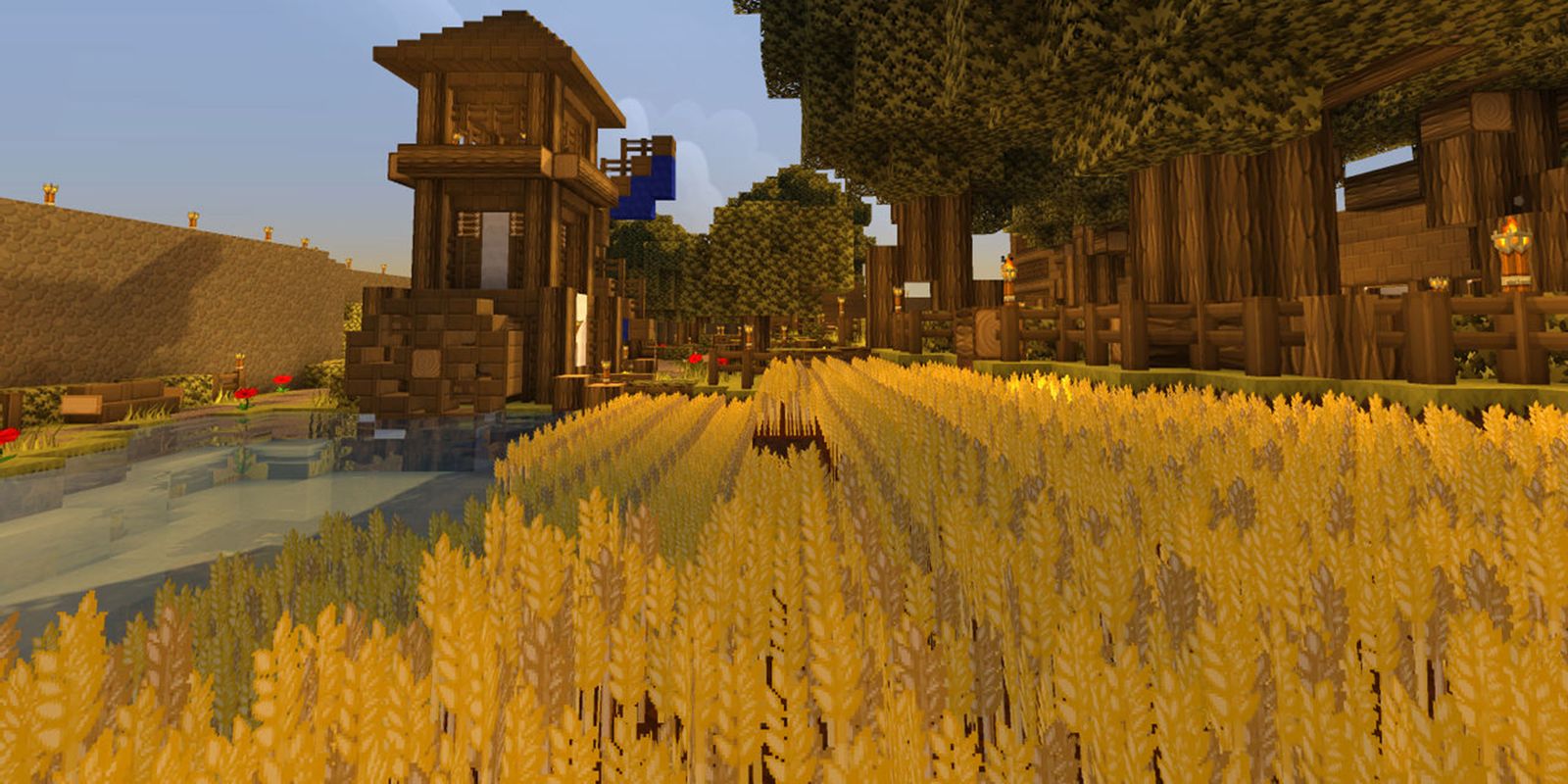
Wheat is perhaps the simplest crop to use and the most useful in terms of gameplay. Wheat is obtained by cutting down grass in the game and planting the seeds that drop. Once fully matured a single Wheat can be harvested.
Wheat can be used to do the following
- Make Bread
- Make Cake (with Milk, Sugar, and an Egg)
- Make Cookies (with Cocoa Beans)
- Trade With Villagers For Emeralds
- Make Haybales
- Breed Cows & Sheep
Bread is a helpful food early on as it only requires three wheat and restores five Hunger. Haybales are a great way to store lots of Wheat as one Haybale equals nine wheat. They can also be used to breed Horses.
From a food standpoint it’s best to use wheat to breed Cows which can be harvested for Raw Beef that can be cooked into Steaks. A single Steak restores eight hunger and essentially costs two Wheat.
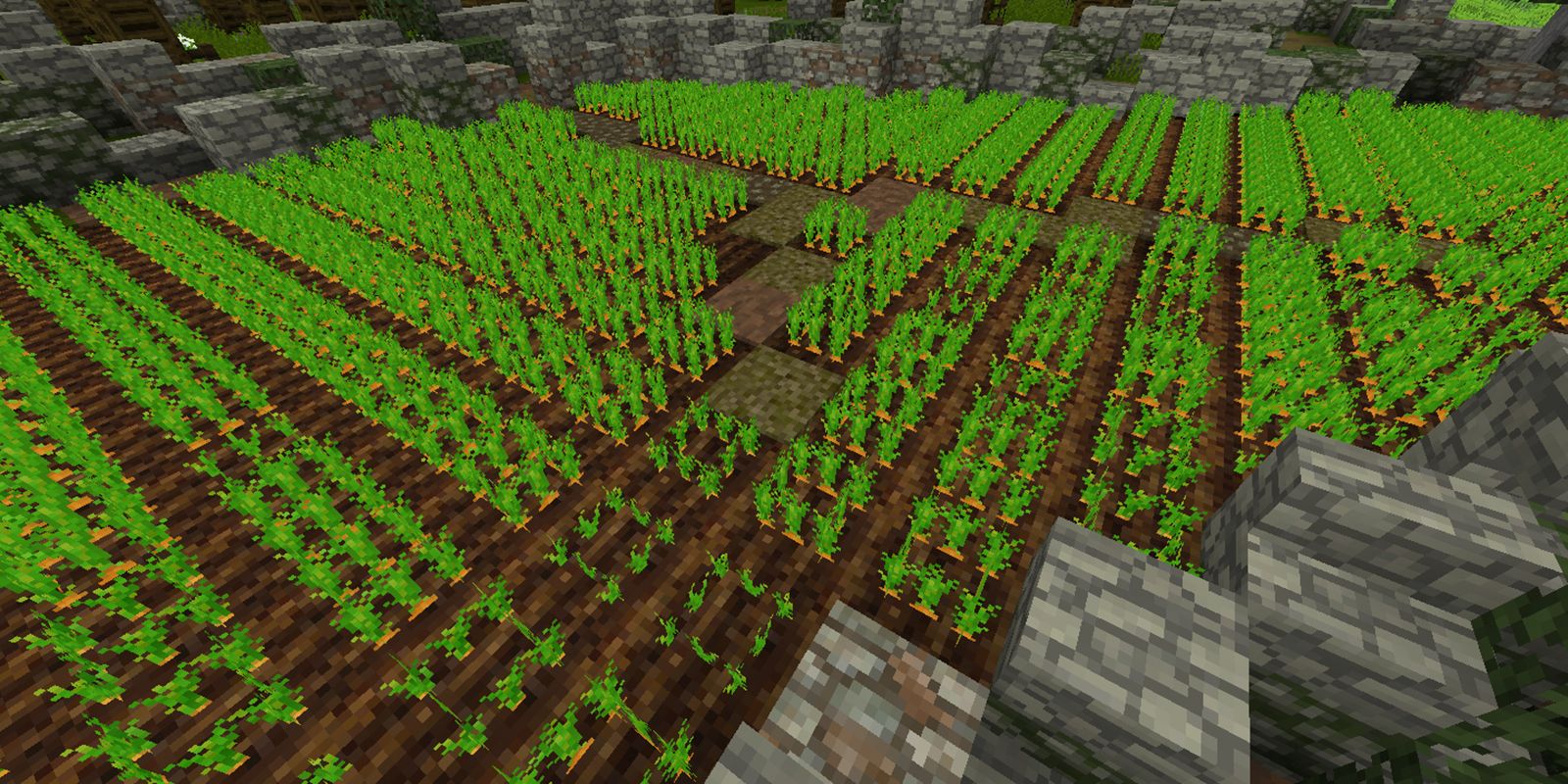
Carrots are a slightly different crop from Wheat. Instead of a seed players plant a Carrot which can result in two to five Carrots when harvested after maturity.
Carrots are used in the following ways:
- Eaten outright to restore three hunger.
- Make Rabbit Stew (with a Cooked Rabbit, Baked Potato, any Mushroom, and a Bowl)
- Make a Carrot On A Stick (With a Fishing Rod) which is used to ride Pigs.
- Trade With Villagers For Emeralds
- Breed Pigs & Rabbits
- Make Golden Carrots (With Golden Nuggets)
Carrots can be useful early on if the player happens to come across a Village farm or as a rare drop from zombies. It’s best to use Carrots to breed Pigs which can be harvested for Porkchops. Porkchops can be cooked and eaten to restore eight hunger making them as efficient as Steaks.
RELATED: These So-Called Family-Friendly Games Are Actually Horrifying, Including Minecraft
Golden Carrots are also incredibly valuable as they have the best saturation and restore six hunger making them perhaps the best food in the game. They can also be used to breed and tame Horses, Donkey, Mules, and rabbits.
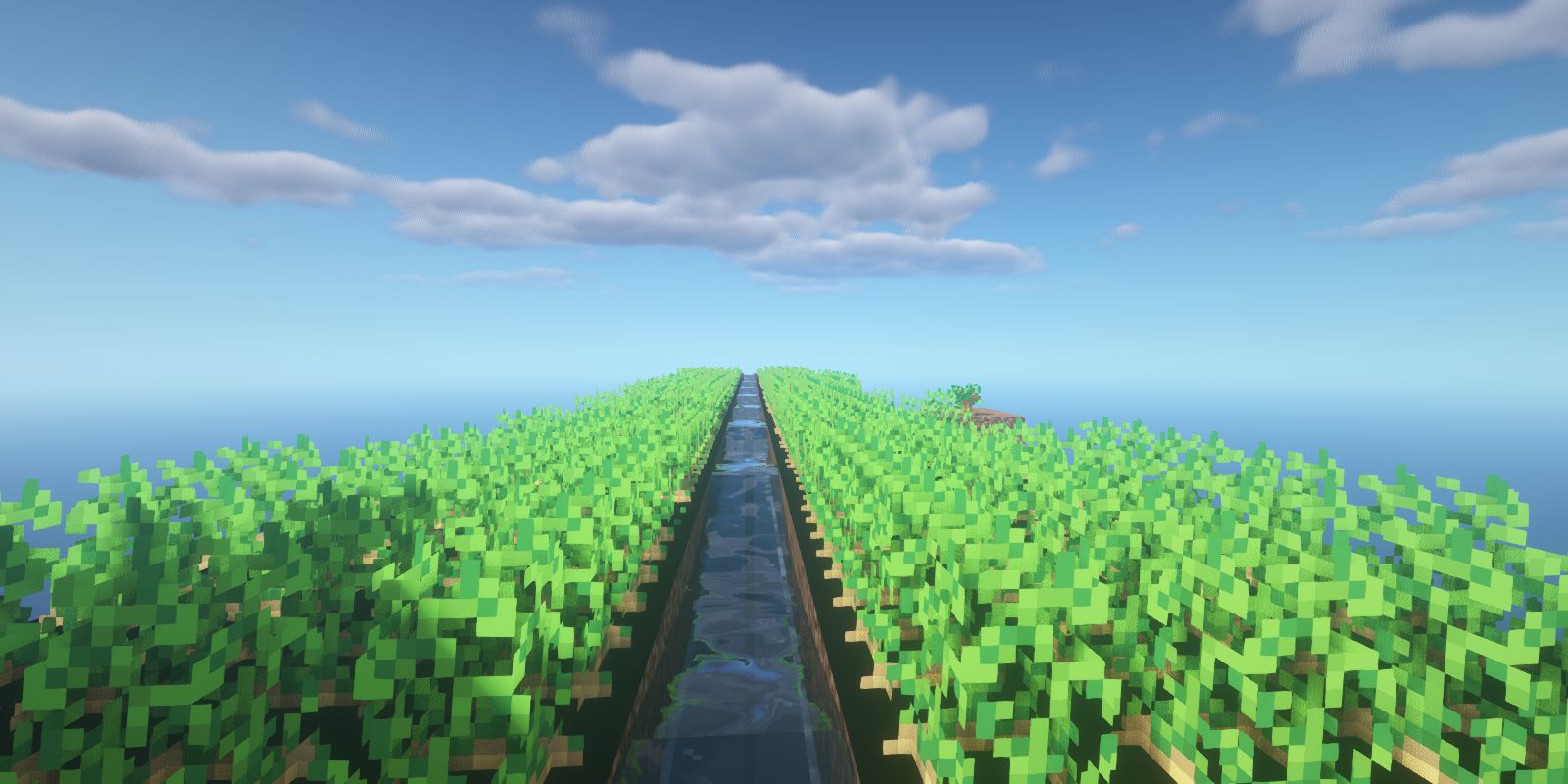
Potatoes are almost identical to Carrots in that planting a Potato results in a plant that can be harvested for one to five Potatoes. There is a slight chance of a Poisonous Potato appearing which can be eaten, but is best thrown away.
Potatoes have a few uses in the game:
- Eaten To Restore One Hunger.
- Cooked To Make Baked Potatoes.
- Breed Pigs
- Trade With Villagers For Emeralds
Baked Potatoes can be handy for players early on as they only require a potato and a furnace, smoker, or campfire with fuel. A Baked Potato restores five hunger.
But the best use is to breed Pigs. Pigs can be harvested for Porkchops that when cooked and eaten restore eight hunger. This does admittedly take more time and maintenance than producing Baked Potatoes so it’s up to the player and their resources to determine which is the better use of Potatoes.
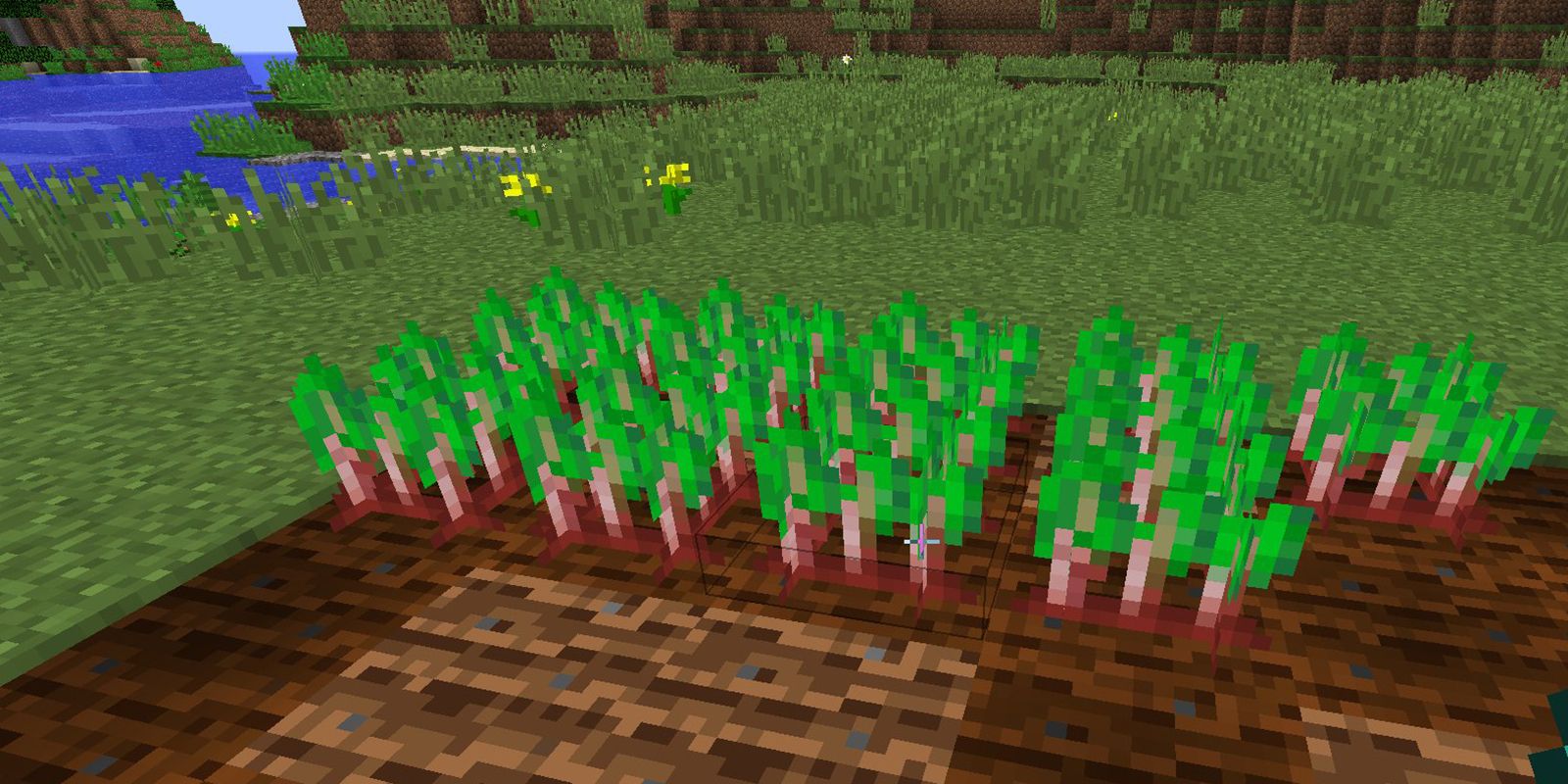
Beetroot is perhaps the least useful, from a food standpoint, of all the crops. Beetroot is similar to Wheat in that the player plants a seed and when the plant is fully matured can harvest Beetroot.
Beetroot is used for the following:
- Make Beetroot Soup (With a Bowl)
- Make Red Dye
- Breed Pigs
- Eaten To Restore One Hunger
- Trade With Villagers For Emeralds
Beetroot Soup restores six hunger but costs six Beetroot to make and it doesn’t stack. Breeding pigs is by far the best use, from a food standpoint, as Cooked Porkchops restore eight hunger at the cost of two Beetroot. Otherwise, players largely use them to dye armor and other items.

All crops require the block Farmland to grow on. Farmland is created when a player uses a hoe on any Dirt or Grass block. Once Farmland is created the player can plant the seed or crop of their choice.
It’s important to note that there is dry Farmland and wet Farmland. Wet Farmland has a source of water within four blocks. When properly watered it will remain a Farmland block unless dug up or the player or a mob jumps on it. Dry Farmland on the other hand will revert back to a block state unless the player quickly plants a crop on it. It is possible for players to grow crops without water, but it becomes tedious very quickly. Therefore proper watering is crucial for long-term crop growth.
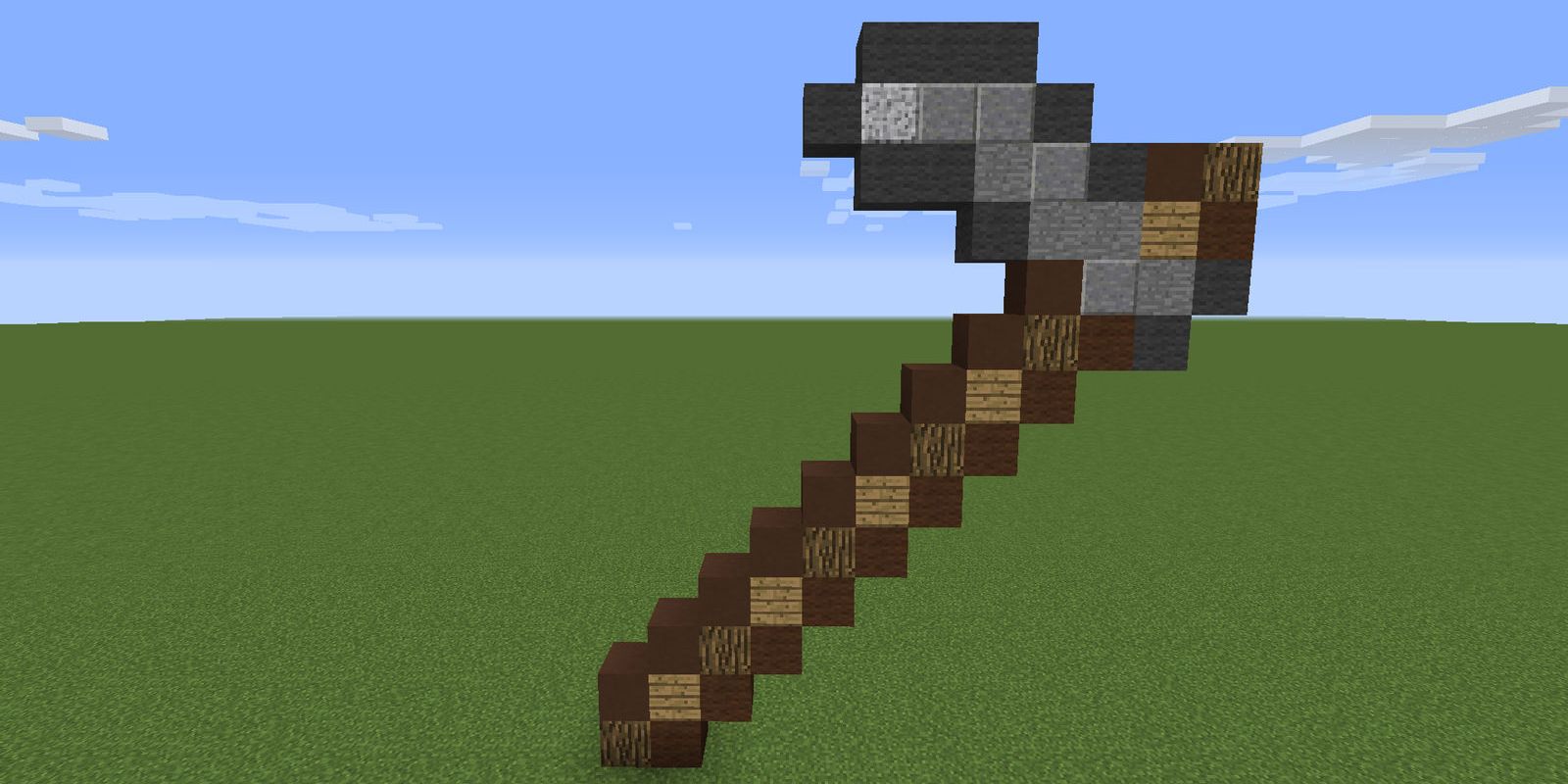
The only tool required for farming is a Hoe to prepare the dirt to turn it into Farmland. A Hoe made of any material will do the job. Commonly players will use stone hoes to prepare their farms without wasting any valuable materials. Diamond and even Iron isn’t recommended unless the player plans to create a massive farm that will take considerable time to prepare.
Other helpful tools can be Shovels to move dirt blocks, Water Buckets to place water, and possibly Axes to clear away any trees. Once the Farmland is created the player shouldn’t need any tools to sustain the farm. Having the farm surrounded by fences and properly lit can ensure the Farmland never reverts back to Dirt or Grass.
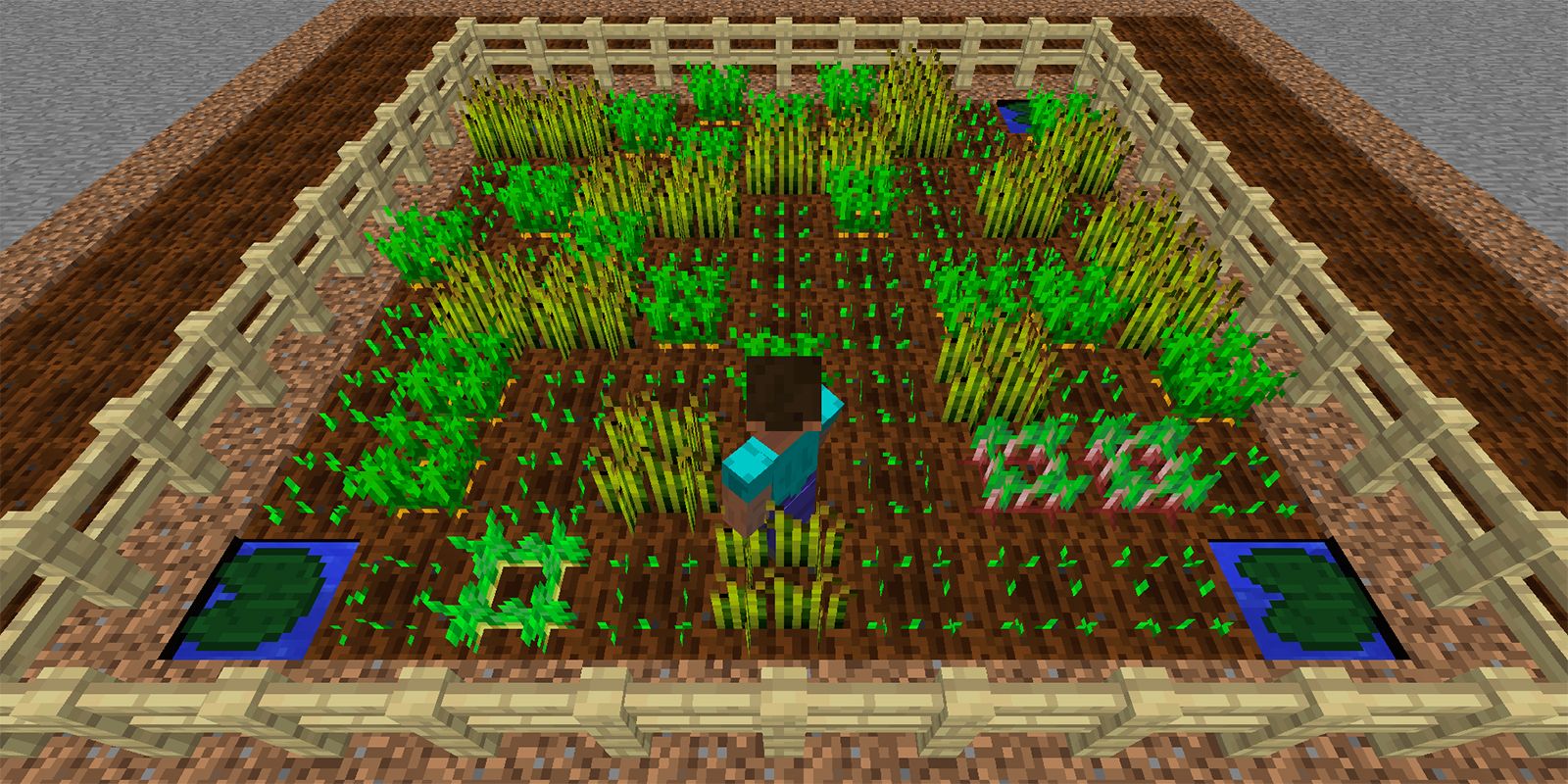
Any individual crop, regardless of type, will take anywhere from five minutes to 35 minutes to reach maturity. The time is entirely random for each crop but can be heavily influenced by having ideal growth conditions such as proper water, light, and being planted in alternate rows.
Even pristine conditions won’t guarantee that every crop will be mature in five minutes, but it certainly gets them close. Players can either wait for every crop to reach maturity before harvesting, harvest only those that are ready, or wait for about 80% to be ready and harvest everything.
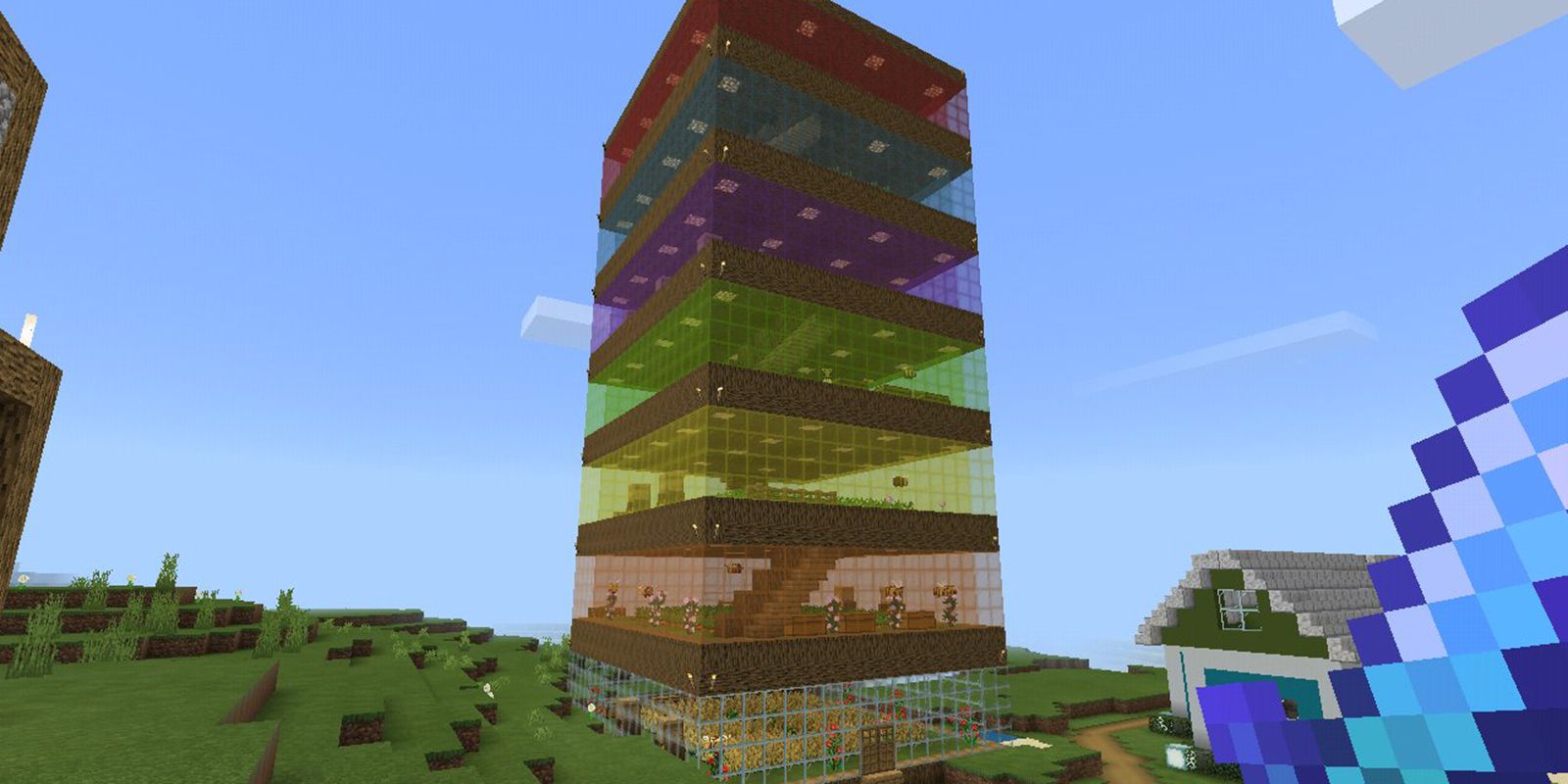
Plants that have a light level of at least nine and a water source within four blocks in any direction have ideal conditions for growth. This can be improved by also planting crops in alternate rows. This means one row of crops should have different crops on either side or simply empty space.
RELATED: Minecraft: 10 Things You Didn’t Know About The Nether
A common compact farm players use to get ideal growth conditions is to have a single water block act as the center of the farm. The player then tills all blocks within four blocks of the water forming a 9x9 square. At least one crop forms a row across the top, followed by a row of a different crop until the entire square is full.
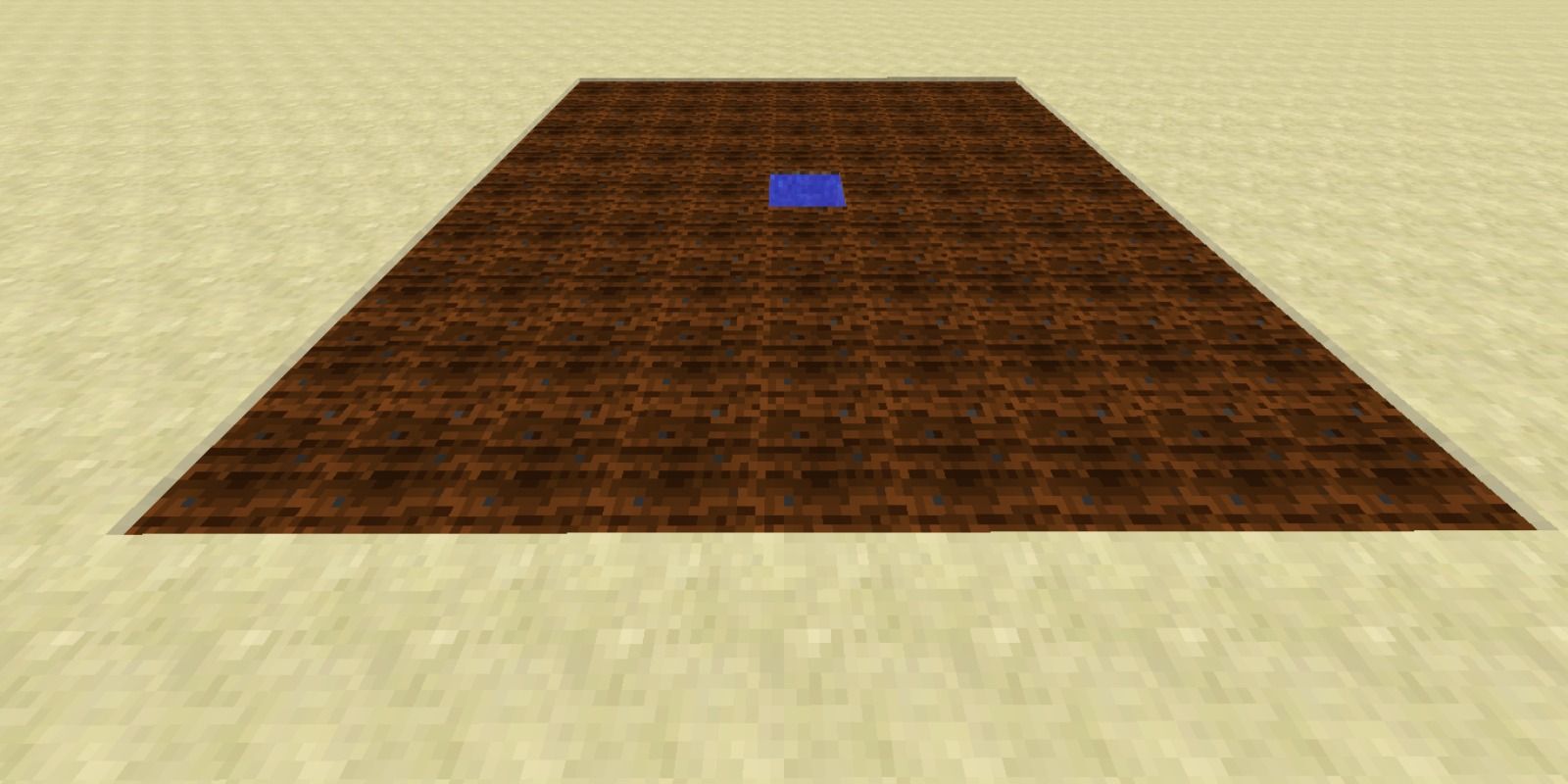
The water block can be safely covered with a Slab, Carpet, or Lily Pad so crops don’t fall in and the player can walk over it. Then the farm can be exposed to natural sunlight or have a lattice of light sources four blocks above it to provide ideal conditions day and night. There are many light sources bright enough to be placed above the Water block and provide light for the entire farm.
Some possible light sources include:
- Beacon
- Glowstone
- Jack o’Lantern
- Lantern
- Redstone Lamp
- Sea Lantern
- Shroomlight
- Torch
Other light sources are either too difficult to utilize, too hard to come by, or do not provide enough light to encompass the entire farm and provide nine light to each crop.
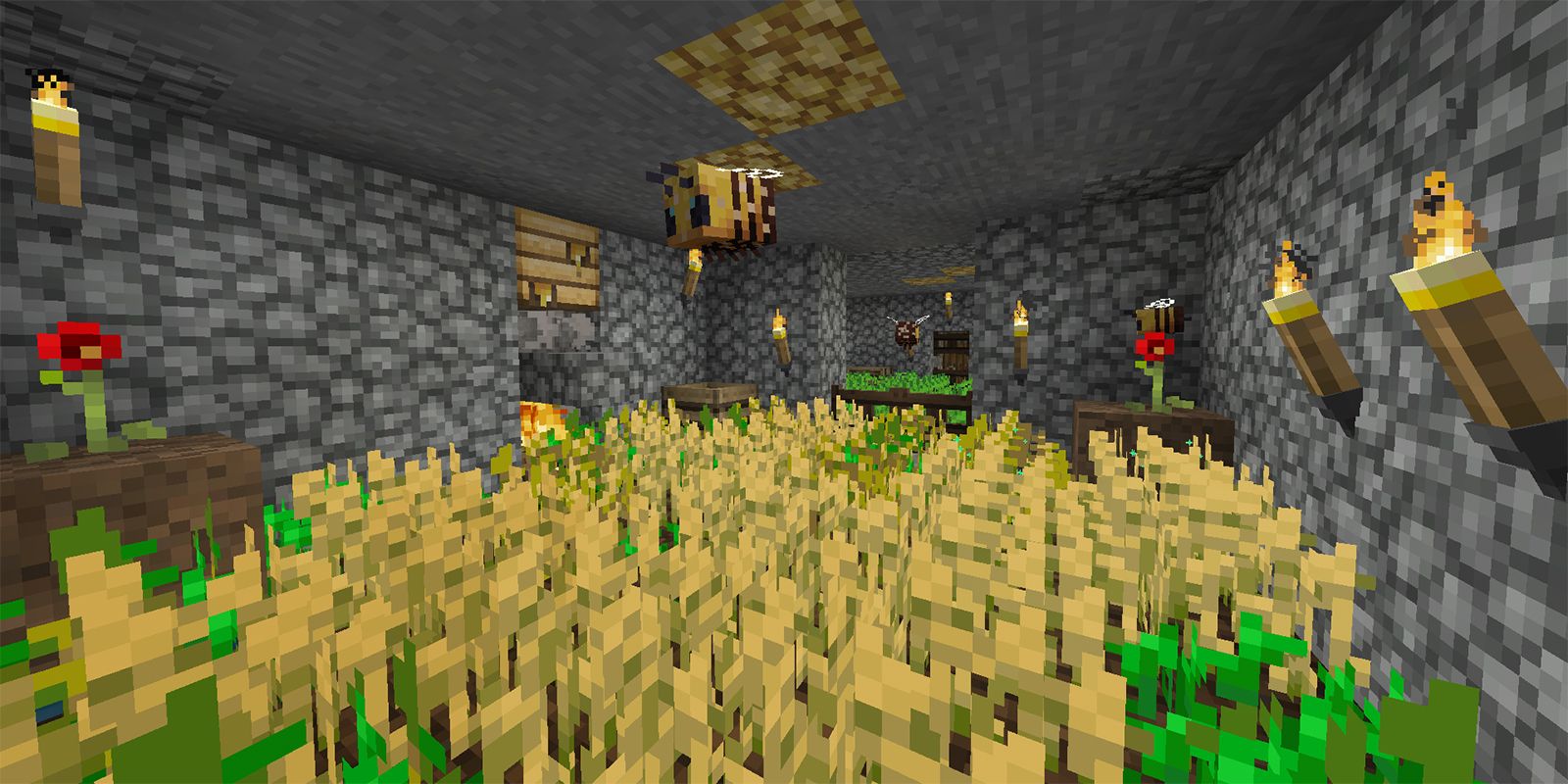
Growth can be sped up through the use of Bone Meal or Bees. Bone Meal which can be harvested from Skeletons can be applied to crops causing them to advance a random number of growth stages. Bees traveling to their hive from a flower will randomly pollinate a crop by one growth stage.
Bone Meal is better for compact automated farms whereas Bees support large-scale farms. Bone Meal is more readily available with a mob grinder that requires the players to grind out Skeleton kills. Bees are rare appearing 5% of the time in Plains biomes, 2% of the time in Flower Forest, and .2% of the time in all other forests. It can take some time to find them and the player will need to be lucky, but bees require much less maintenance at the cost of taking longer to grow crops than Bone Meal.
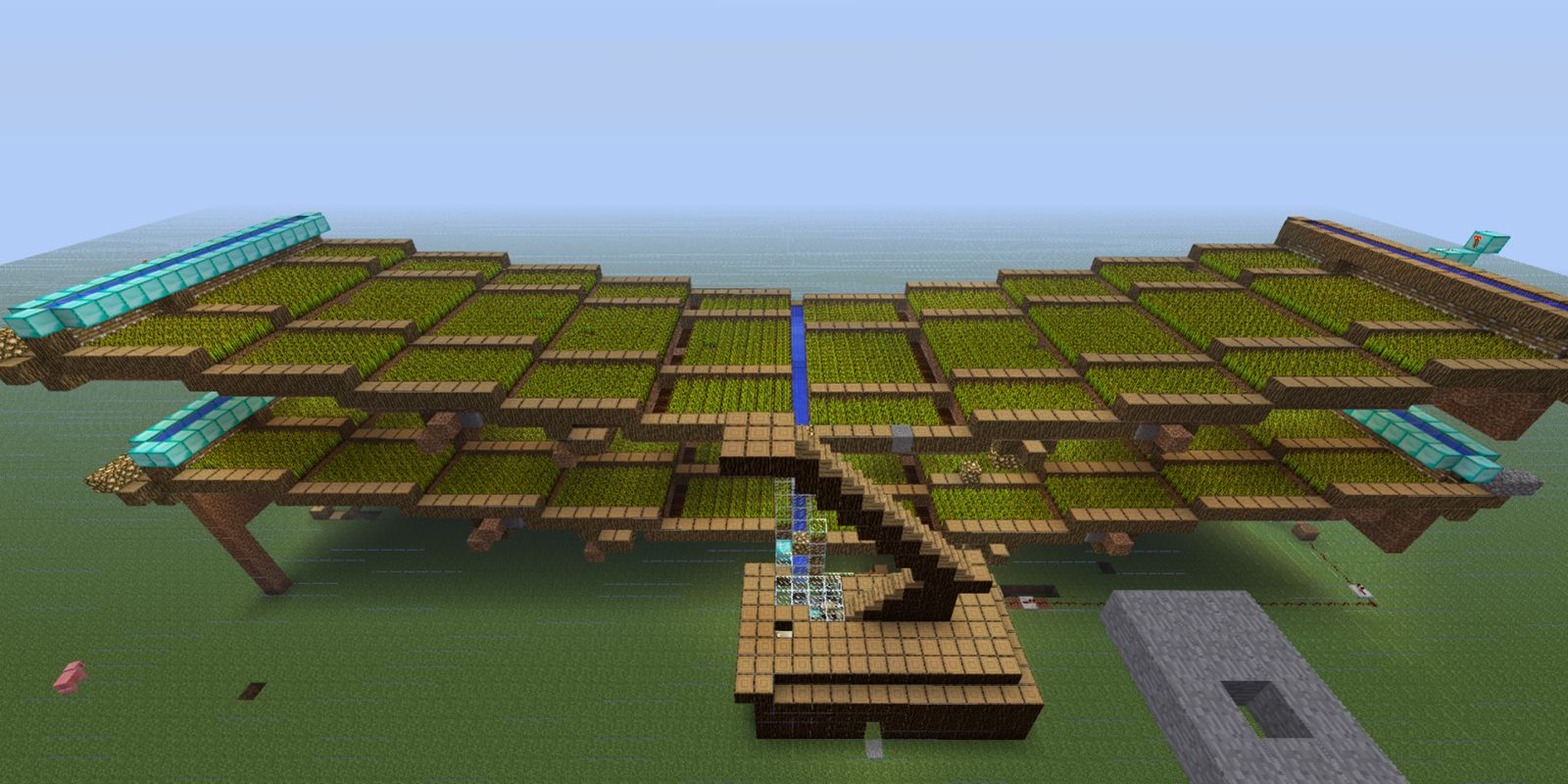
It’s possible to automate the growing of crops through a variety of means. The most common method is to design a farm that can be flooded with water through the use of either Dispensers or Pistons. The water will harvest the plants and push the crop to either a designated water channel or hopper with attached chest.
Using Bone Meal and Redstone players can create very compact farms that grow quickly. The idea is to have a row or even a single block of Farmland grow crops, have Dispensers nearby to activate them with Bone Meal, then have a water channel clear away the mature crops.
Villagers can also be utilized to replant crops automatically. If a Villager has seeds or crops in their inventory they are likely to plant them on unused Farmland. Having a full inventory of seeds or crops ensure they are less likely to collect the mature crops. This does require breeding Villagers which can be tricky.
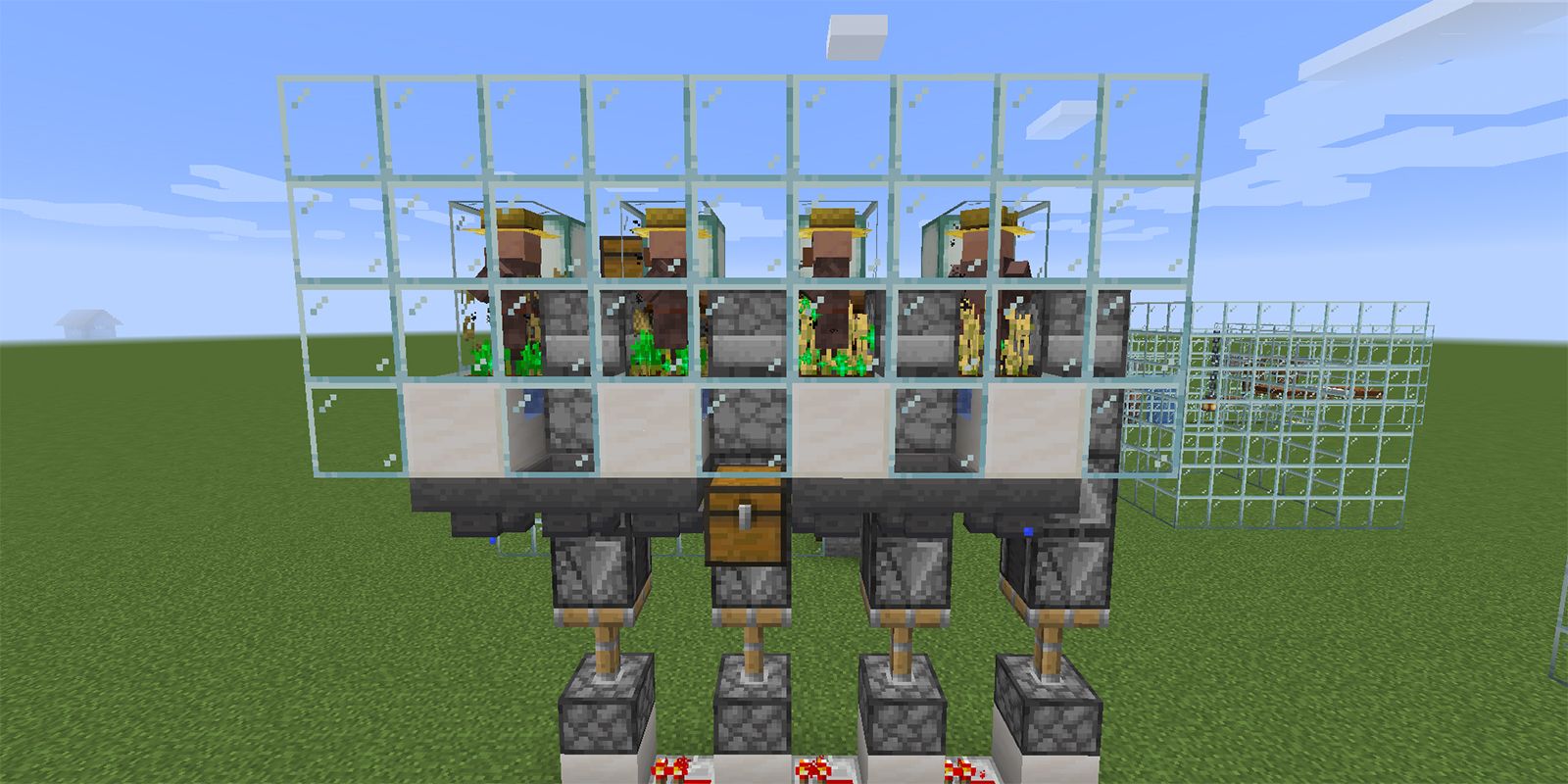
Using a combination of Bone Meal, Redstone contraptions, Villagers, and water players can create semi-automated or even fully automated farms. If done properly they can plant, grow, harvest, and collect the crop without the player ever getting involved. The designs can get complicated and require a significant amount of time and resources to set up but can provide the player with a passive means of acquiring crops during their playthrough.

